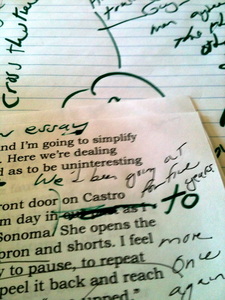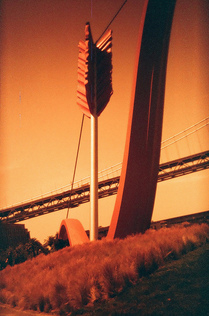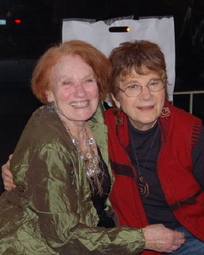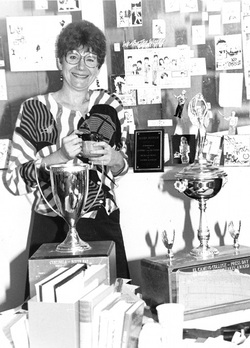 Governor Rick Perry/Ed Shipul I love the expression “heightened neurosis” and wish I had made it up, but I heard it from Pema Chodron in a talk called “Troublemakers” that she gave in 2006 at the Omega Institute. Her point is that we need the people who irritate us to heighten our neuroses. These annoying folks make us see and feel the inmost unloving aspects of our own nature. This is where we still have work to do. Texas Governor Rick Perry represents one kind of annoying person, the kind I completely disagree with, but Perry’s path and mine will never cross. My wellbeing depends on his not becoming a mover and shaker in my world, and I think that outcome has already been settled. He is easier to deal with than the actual troublemakers I bump up against day to day. Applying Pema’s enlightened approach to people who get on my nerves pleases me. After all, having had a full lifetime of being annoyed, I am an expert at knowing annoyance when I feel it, but not yet so wise as to look at my own reactions as a source of information about me. I do not yet translate being irked as a sign of where I can be hijacked from equanimity. Rather, I jump straight to judging the other and then criticizing myself for judging. I find my world peopled with those who, regardless of their intentions, point out to me where my own neurosis is intense. Pema would say I am lucky, that this is a good thing. She says that Vajrayana Buddhist teachers will sometimes be deliberately mean or prodding so as to awaken their students to their blindspots. So when anyone utters inanities, comes across as a name-dropper, an expert too full of themselves, wears super strong perfume, sits in front of me in a theater twitching and bobbing, I have the option of feeling gratitude. And I still get to be annoyed. That’s the beauty of nonduality. I am beginning to recognize when someone well meaning tells me what to do or a friend fails to see the world as I am seeing it, I don’t easily open my heart or my mind to this personal troublemaker. The negative feelings that arise and my attempts to comfort myself and cover my animosity confuse me. Then confusion lies like a cloud between us. As I write this I am having an “aha moment.” Actually, I have improved quite a bit. I utter far fewer unkind words and more often suffer my disapproval in silence. And now, not only do I have my public self doing better, but my inner self is quicker to recognize and to admit that the negativity I am feeling is a form of suffering. And I don’t want to suffer. I’m betting that Pema is right; being provoked is part of the path that must be taken to identify those parts of being me that cause suffering. This knowing may not be fun, but it must be done. In the name of freedom, bring on the troublemakers.
 Green ink/Alison R. “The real voyage of discovery consists not in seeing new landscapes but in having new eyes.” That from Marcel Proust for whom the memory of “squat, plump little cakes called ‘ petites madeleines,’’’ occasioned his spiraling into childhood ecstasies in Remembrance of Things Past. Although I had traveled to Cuba to view the unfamiliar, I had continued to see as I often do, with “old eyes,” apprehensive, not quite trusting any discoveries about Cuba or myself. Yet once back in the safety of my San Francisco surroundings, I decided to risk giving new eyes another try although I would not have to go far, only a few blocks, for this different way of looking. I feel apprehensive as well as excited to sit at the dining room table of a much admired and published writer on a Sunday afternoon, three of my blog posts cum essays spread in front of us. This writer said that when I came back from Cuba, I could buy an hour of consultation with her, during which she will help me look at my writing and perhaps discover a next step as a writer. With several books on bookstore shelves, including a memoir and a book on how to write, she can, I hope, give feedback that could point me in a fresh direction. Perhaps she will see such potential or raw talent that she may even ask me to enroll in her upcoming memoir workshop. Maybe even suggest a scholarship. In addition to wishful thinking, I have told myself that this is a chance to be vulnerable, to look at my own outpourings from a professional perspective and accept criticism without flinching. After we shake hands and sit down, she clips her take-apart glasses together over her nose and reaches into a jar of ballpoints, pencils and colored markers from which she chooses green to scrawl across my printed pages, crossing out words and lines as well as circling paragraphs as she searches for what she thinks should be the pith of each piece. As she reads, she asks questions, mostly “Why?’ It seems that my work here is to respond to the why. Why those particular words? Why lime green instead of chartreuse? Why had I never told my girl friend in the five years we were sweeties that the way she dressed sometimes made me squirm? Why had I substituted my niece’s real name with Turquoise and not Jade or Ruby? Flipping through the three blog posts I have printed out for her, she dismisses “ Dog is Love,” noting that no one wants to read about the death of someone else’s old dog even if that dog is a pit bull with cancer and the reason your son can love you. Too sentimental, limited appeal. But she does recommend a paragraph near the end as a likely beginning should I consider a rewrite. She wants me to look at each piece of my writing with fresh eyes and discover what one thing I really have to say. I’m glad I like to revise, even more than I enjoy struggling through a first or second draft. But when I see her cross out the entire first paragraph of “ Should Happens” with a green slash, I gasp. I see that without the first paragraph, the second paragraph just hangs there. There’s revision and there’s major surgery. “Don’t write about writing,” she directs, as the green marker continues its relentless progress, unless it’s a book about writing. It will not be interesting, slash, to anyone but the writer. In the margin of page two she scribbles dialogue I might include once I undertake this particular revision. As the green marker zips across each page, she chuckles at a phrase or a footnote. In those moments, I relax about the colorful cross outs and circles that decorate each manuscript. I want to ask her to stop the green drizzle to show me what she likes and tell me why she likes it. When finally I find my voice to ask her outright if she thinks I can write, she may have answered that of course I can write. And why would she spend time with me if I had no potential? I have forgotten what she actually did say. I remember that when I was a writing teacher, and my students yearned to be reassured, I probably said something like anyone can write, so of course you can write, but do you and will you? As the hour ends, she says her best advice to me is to start over. She tells me to find a writing group, dismissing my hint that I might benefit from her workshop for memoir writers because clearly I have no memoir in progress, only short pieces in need of major restructuring. So how do I feel about risking my fragile ego? The old way to see this experience would be to be discouraged A better way to deal with disappointment is with a heated “I’ll show you.” Okay, so I am not a septuagenarian genius and there’s not a book yet, but I’m pretty sure I have a title for that book when finally it is written. It will be from a poem by ee cummings –“may i be i.” “may i be i is the only prayer—not may I be great or good or beautiful or wise or strong.” Or someone else. May it be so and soon.
 Japan Airlines Boeing 777-300 / Peter Russell This Cuba cold is a pain and a drain. If I imagined I would be in form to explore the experience we 74 travelers shared, I was wrong. What follows then is a reflection I made in the Unitarian Universalist worship service last January. It is about being wrong.
Some wrongs are simple. Sent a mass mailing with an incorrect date? Done that. Formed an opinion about someone based on nothing but a hairstyle? Done it. Bought a $600 brown knit wrap at a craft show, got home and hated it enough never to wear it? Done that. Filed an income tax return from a sick bed, high on decongestants? Yup.
But what about more complicated decisions? When I flew Japan Airlines back home to California in the early ‘70s, I was leaving a privileged but constricted life as the wife of an American businessman with a Japanese client. I was the mother of three boys. The youngest, born in Japan, was nine months and I took him with me. The other two, ten and eight, I left in Japan with their father. I imagined they would follow, and we would be a mother and three children in a one-bedroom rental with the boys sharing a bedroom and the baby in the living room with me.
But in Japan, the boys were enrolled in a private school, with the benefits of a company-provided car, driver, maid and three-bedroom house in Tokyo. Thus, when they came to visit me in the place I could afford, a low-income section of Los Angeles, they clamored to go back and live with their father. I told them, “No, you are going to live with me, but I will let you visit your father before school starts.” They went and they did not come back. I waited for them to start school in September. Their father sent their clothes, but he did not send them. Several years went by before they visited me and their little brother again. And when they came, they made it clear that they would not stay, as their father had been moved to Thailand where their lives continued: interesting and privileged.
When I left my older sons and my marriage, my privileged life in Tokyo with unlimited access to the American Club, what filled me with a conviction of rightness about what I was doing? What did I believe that brought me back to California, to no job, no car, single-parent responsibility for a baby and just $350 in my pocket? I didn’t know if my decision was right or wrong.
Kathyrn Schulz in her book Being Wrong, wrote “Beliefs are models of the world that help us take action; and accordingly, incur consequences.” The beliefs that led me to leave Japan were many: I didn’t belong overseas coasting on top of the culture as the wife of an American businessman. Without a useful role, my life lacked purpose and a sense of belonging. I believed the war in Viet Nam was wrong but because of my husband’s business venture, I could only demonstrate carefully in the streets of Tokyo and dodge riot police. I felt my sanity and my identity were at risk. My belief that the older boys needed me, and I should be their father’s wife carried far less weight.
And so I pretended that this jaunt to Los Angeles was temporary. I said to the boys as we waved goodbye, “See you in a few weeks,” though I would not come back, and of that I was certain.
Schulz says about certainty that “one of the most defining and dangerous characteristics of certainty … is that when we are caught up in our own convictions, other people’s stories –which is to say other people—cease to matter to us.” It’s true, I didn’t think, “My sons have no mother now.” “My husband, what will he be thinking?” In the certainty of my decision, I mattered most.
Was I wrong? Was I right? Should I have stayed? Should I have gone? A lot of time has passed and, at least in this case, I have come to see right and wrong as sides of a mobius strip, twisting wrong and twisting right with risk and outcome always in play.
 Dock leaf bug on blades of grass/swan corner While I am without an internet connection, Kate will post pieces I wrote in the past to speak as credos during service at the Unitarian Universalist church where I served as a Worship Associate.
Like it or not, my worldview is limited. I discovered this years ago during a session of active imagining, which resembles dreaming awake. Seated comfortably, as one might be for meditation, I visualized myself cross-legged on a magic carpet. Then I let go of the image and allowed it to carry me where it would, hoping to fly over the rainbow or at least above the chimney tops. Within seconds after take off, my magic carpet upended. Luckily, I did not fall off. Had my own guided-imagery dumped me, the damage could have been irreparable.
Disappointed by this imaginative limitation; nevertheless I flew on, upside down and close to the ground, peering between blades of grass as random bugs scuttled by. Despite its limits, this outlook characterizes my relationship to things in this world as I make my way without benefit of the “big picture.”
Each day I hope to unearth evidence that what I love, including my place in the universe, loves me back. Some may call this practice superstitious or foolish. For my part, looking for loveliness and conferring meaning feels more like bird watching and unearthing hidden Easter eggs.
In this spirit, I practice emotionally connecting with dogs, usually not purebreds. I want these dogs to know I see them as ultra-kind beings rewarded with a return life to continue giving unconditional love as four-legged rather than two-legged creatures. I have heard “To err is human, to forgive canine.”
However, I never confuse love for random dogs with the true unselfishness of communities like Rocket Dog Rescue and other organizations dedicated to saving animals. I honor those groups in more practical ways. Both financial support and doggie eye contact are empowering strategies, though one makes sense and the other does not, and doesn’t have to.
A second place I hope to find answers and reassurances about my place in the universe is everywhere and nowhere in particular. I might search horoscopes, scanning all signs for messages that reinforce a sense of hope or possibility. I am going to need plenty of help if and when I have to battle cruelty and injustice. Once in Lyman’s chess column above the Cryptoquip in the Chronicle I read these words: “Chess – like other sports – teaches us that defeat is not total or forever. ‘One day you give your opponent a lesson, the next day, he gives you one.’” And there’s Heidi Klum on Project Runway: “One day you’re in, the next day you’re out. Those thoughts resonate.
I gave my sister a thought she could use on a day she felt angry with her life and called to tell me she had lost her voice yelling at god. I said to her “That’s like yelling at a tree.” She found this comment useful and profound and called me back to say so. No evidence has yet been unearthed to support my observation, but isn’t it possible?
Between the possible and the certain runs a practically indiscernible line. I have tried not to cross it. But errors can occur. Take Fact #129 under the lid of the Snapple Diet Iced Tea. That Sunday in the lobby of the Jewish Community Center I alone believed a mosquito has 47 teeth. Skeptically, my friends questioned the accuracy of Snapple lid fact #129. Nevertheless, I told all in earshot what I knew. Whatever disbelief I met, I dismissed. But I had been misinformed; mosquitoes do have teeth but not 47. As a result of googling mosquito teeth, I learn the bottle cap was not gospel. Well, Alison, I mused, next time you find a fact in a bottle cap, pose it as possible not certain.
That seems like an apt lesson in humility for one whose access to information is already limited by a perspective nowhere over the rainbow and certainly not way up high.
Fortunately, the world I love is full of people not like me, who recognize the big picture when they see it or know where to find information about it. For example in Don’t Sweat the Small Stuff, R. Carlson advises us earth-dwellers to view our trivial concerns against the backdrop of a vast universe wherein we are microscopic dots.
I see the wisdom therein, though contemplating being this insignificant does not increase my hopefulness or sense of empowerment, not the way meeting the eye of a dog in a coffee shop can tune me up for large or small encounters with cruelty and injustice.
 Cupid's Span / aaron_anderer At a performance workshop last week, I meet my self-righteous self. She calls herself AmNasty, which she thinks is clever because it sounds so much like Namaste, which we know means “I see the divine in you.”
Sure, sure, clever. I get it. And if applauding her cleverness were enough, problem solved, but when she surfaces, she wants much more. Sometimes she is actively aggressive; sometimes she is passive aggressive.
AmNasty comes out when she feels she isn’t getting her due. She thinks the performance coach should compliment her for what she already does well. He wants her to twist her body, strain her legs and back and burble nonsense like “rubber baby buggy bumper”, but she’s already a good speaker and performer, thank you. Is it unreasonable to want affirmation?
Had AmNasty chosen to speak up rather than act out, she would have said, “I am not liking to do this, but might be willing if someone would acknowledge my abilities,” but finding no kind way to say so, she could only sulk, be surly and leave early, exeunt stage left.
I say “exeunt” because it means more than one character is heading into the wings. In truth, a myriad of Alisons walk out. AmNasty, my self-righteous aspect, surfaces when affirmation is in short supply. And faster than you can say Namaste, my inner critics rush in to join her in the conversation.
Birtha is chief among these inner critics. For as soon as I assert my self-righteous self, she swoops in. Swiftly and invariably, self-hate follows self-righteousness. Sudden and ruthless, Birtha rides in astride the second arrow.
Buddha teaches that the second arrow is the suffering we cause ourselves after we are struck by the first arrow, pain from the outside. Such pain may be criticism, rejection, death of a loved one, even failure to feel connected. You did not cause the pain of the first arrow. But pain from the second arrow comes from the story you tell yourself. Shoot, don’t shoot. It’s your call.
I actually see Birtha manifest the morning after a workshop on Transforming Inner Critics. I see her at my bedside when I wake up. She stamps her tiny patent-leather tap shoes on my bedroom floor and fires at me, “Are you really better off today than you were yesterday? Do you think you can do without me?”
But I am prepared to greet her. Welcome, I say. Let’s go for coffee and talk then. She is surprised not to be rejected but rather invited to go on an outing. I dress quickly. I take her down the stairs, showing her how I pause mindfully at the top so as to be fully present in the descent. We enter the parking garage and I pull out the car. Then she gets in, and I make certain we both buckle our seat belts.
At Starbucks, we sit where we can see everything, and I take out my journal. I am aware of her silence and am so grateful that I push the other chair closer to the table so she doesn’t feel excluded and shoot from the hip. The music is rhythmic and bluesy. She wants to dance. I feel optimistic, so we go around the corner and dance. When the barista Chang comes by the table, I ask him, after the fact, if dancing is permissible in Starbucks. He says he guesses so and doesn’t see why not.
But Orville, another inner critic is not so sure that dancing in Starbucks at 6:30 a.m. is okay, even if the store is empty. As the arbiter of appropriate and inappropriate, he says I have gone too far, done too much and taken up too much of Chang’s time.
Next time, I’ll invite Orville to surface prior to the fact rather than after the act, when it’s about the arrows and the pain. And there will be a next time. For inner critics, there will always be a next time. For self-righteousness too. So Namaste to all the selves that I am as well as to the performance coach, who wants to do the right thing, for himself and for others in that group who may need and appreciate his help. Namaste, Namaste, Namaste.
 Fixer upper / Tup Wanders As a believer in stories, my advice for my niece is based on personal experience. I want her to know that the stories we tell ourselves can change our outlook and alter our self -image. And as an award winning comedic choreographer and dancer, Turquoise can concoct a story with ease.
Everything is falling into place for her trip to Los Angeles. She has sublet a studio apartment in an ideal location for taking improv classes, and because getting around in L.A. is no snap, her Dad has offered her a not-so-pretty minivan.
She knows it’s petty, but that car does not fit the image she wants to project. It’s clunky and larger than a Scion or a Fit or a Mini-Cooper and bespeaks ordinary and safe whereas she wants to say cute, snappy, cutting edge. It’s a minivan, after all, a silver Ford Windstar of indeterminate age previously owned by a food bank in rural Northern California, and the roof is peeling.
First of all, I’m not faulting her for having this car image problem. It’s healthy to think she’s entitled to a positive view of herself. And if she follows my advice, no matter what car she drives in LA, she will see her bright side.
Yet it is important to acknowledge what marketing research has shown about the effect on one’s self-image of car and clothing brands. According to University of Minnesota researchers, one group of women was sent into a mall with a plain pink shopping bag and another group with a Victoria’s Secret bag. Those carrying the branded bag rated themselves more feminine, glamorous and good-looking.
Researchers also found that people who used a pen with the MIT logo rated themselves higher as leaders and smarter than others.
So it goes to show that brands have real power because, as researchers say, from the clothes we wear to the cars we drive and the bags we carry, they all make statements about who we are or who we want to be. And my point is that the stories we tell ourselves have that same power over us. They can enlighten or mislead, inspire or discourage.
The truth is, I, myself, drive an image-challenged car. It’s a maroon ’97 Toyota Corolla missing its hubcaps on the passenger side. In addition, the passenger side has numerous white scrapes, evidence that I have misjudged the parking space to which I have been assigned in my building’s garage. I can remember the loss of both hubcaps, how they bounced off when I brushed the curb on Noe Street.
When I look at the car, I see its unloveliness, its bruises, the unrepaired damage and I see a car not worth stealing, a car not needing to be heavily insured, a car that’s easy to pick out in a parking lot if you’re on the passenger side. To me, the car says I am not concerned with what people think of me or my materialism. Although I admit I have yet to hand over the keys for valet parking at any social gala.
Part of my comfort with driving an inconsequential car is reverse snobbism. I don’t live in Pacific Heights, Sea Cliff or Nob Hill, I live in eastern Western Addition, northern Hayes Valley, eastern Tenderloin and south Cathedral Hill, at an unglamorous address in this city of splendor.
Should anyone want to know why I drive that car, I have a story. Most queries, however, come from my parking lot friends at Safeway on Webster and O’Farrell, men who perceive me as having more money than they do, but notice that their cars look a lot better than mine. These are friends I don’t try to impress.
It’s when I am giving rides to more affluent friends that I explain the car’s declasse look as an example of urban detailing, as if the detailers offered me a special on denting, removal of original paint, scratching, scuffing, spills and stains.
Telling this story allows me to acknowledge the shamble the car is in but to project an aura of courage, conviction and competency, as if it’s a choice after all.
If Turquoise does drive the silver Windstar with the peeling roof around Los Angeles, my advice is to smile and improvise an incredible story behind this food bank cast off, something about the number of lives saved, skidding under falling branches, swerving through torrential downpours, skimming over frozen rutty back country roads, etc. Actually any story replete with detailing will do.
I have changed my niece’s name so as not to dent or tarnish her self-image.
 Corky and me on a happy day Once I wrote a piece about a day my girl friend, Corky, and I strolled toward Hayes Street. Spying a soggy but brightly colored cloth flower on the ground, I picked it up and offered it to her as a tribute, more or less. She often wore large colored cloth flowers. For whatever reason, she disliked this one. I held it awhile and let it drop somewhere along our walk. Later, when I wrote about it, I said the color was chartreuse. When she read what I said, she objected. I may have said it was a favored color of hers; but upon her request, I changed the color to lime green. That was not a difficult request to fill.
But this new request, to write something for her, coming almost a year since we stopped seeing each other is a little more difficult. When we talked a week or so ago after months of silence, she said, “You caused me pain when we broke up, so you should make amends and write something for me.
It’s my guess she should star in this story.
I don’t see why not. Once, our relationship inspired many of my stories, and I’d like to think I treated her with kindness though clearly the spotlight was on me. Listeners or readers could pick which one of us to identify with, yet in each piece was the faintest whiff of my rightness and, I suppose, the hint that she may have been somewhat wrong. Not a big wrong, but in my world of the story, wrong.
For example, I wrote about her finishing my sentences and how annoying I found this. Another time, I talked about her introducing me to her former college roommate as a writer and how I objected to the label.
So let me continue Corky’s story with my view of why this relationship didn’t work. No villains here. Only her childhood and mine, and particularly what we brought along well into our seventies. And I’m going to simplify it to one word: competitiveness. Here we’re dealing with competition so deep-rooted as to be uninteresting in the retelling.
Go with me instead to Corky’s front door on Castro Street in San Francisco one warm day in our past as I pick her up for an afternoon in Sonoma. She opens the door. She is wearing a kitchen apron and shorts. I feel a surge of anger. I have no ability to pause, to repeat silently “anger, anger, anger,” to peel it back and reach the hurt of what feels to me like being “one-upped.” WAAAA, as in “Want,” as in the opening chorus of “What about me? I can’t compete. I don’t stand a chance of being noticed.” I criticize her. I am ashamed to be seen with her; she should be more considerate of my feelings. That sets the tone for the rest of the day. She’s defensive. I can’t dictate what she wears, etc.
Then there’s the black tutu, the see through boots with the multicolored socks. The fabulous if sometimes elegantly mismatched jewelry, the pieces of knitting not intended to be anything but winding up really something with a button added.
No chance for this relationship as long as I argue with the reality of who it is that opens the door. Should Corky have to change to be loved?
While the months of separation passed, I learned from therapy and from listening to Tara Brach’s Dharma (Teaching Talks) that as soon as I wanted Corky to be different or to dress differently, I had closed my heart. As soon as “Should” took root in my mind and heart, in the moments I opposed the reality of who she is to get my historically unmet needs met, I could not be present or offer her love.
Now come forward in time to the dining room at Corky’s house last week. I want us to heal and revisit some of our issues with honesty. I hope I have no expectations.
Among all we talk about, she tells me she shopped at Kohls, thinking Vera Wang would be on the racks, but instead buying a Jennifer Lopez faux fur coat she is sure I will not like. It is apparently part of an eye-catching ensemble she wore to the theater in Berkeley. The first time she wore it, she told me a woman with a fashion blog wanted to take her picture in her faux fur and black beret.
Her message: You won’t like this because I still call attention to myself and love admiration. In our past you didn’t accept this about me.
My response: Put it on. I like it. You look adorable.
 Win some, lose some. Narbonne HS in the late '80s I’ve heard it said that hindsight is 20-20. With this insight in mind, I have to re-examine my 31 years of secondary school educating with an eye to learning why I was never named Teacher of the Year.
Those first several years in the classroom as a youngster, I can easily see why no one nominated me. Too many mistakes, warnings about unsuitable behavior, about being too close to the students or wearing clothing that gives the wrong impression. Heels too high, skirts too tight, necklines maybe a mite revealing.
Then those years fall behind. Shoes become sensible, pants that reveal no shape replace skirts, blouses droop over waistbands. Now immune from any interested eye, I invite no inappropriate attention. But still no nomination.
Apparently, there’s more to qualifying than transforming from vamp to frump. I have been too superficial in regard to what will garner the votes necessary to be elevated above the ordinary wielders of chalk and erasers who comprise my teacher peers.
One year, I identify the exact moment that any hope of being hailed the queen sails out the window. The committee has come to evaluate my fourth period eleventh grade English class, despite the fact that my real claim to acclaim is in the journalism program which meets sixth period.
Equipped with an impressive lesson plan I have divided the class into groups who have been instructed to discuss a poem by Gerard Manley Hopkins with an eye to pooling insights. Unfortunately, Nikita, despite instructions to look interested in the poem, decides to replenish her eye make up and redraw her lip shape before slathering on moist pinkish lip-gloss. Members of the committee note the aberrant behavior and can’t see how it relates to any part of the lesson plan. Later the report will come back informing me that I lack class control.
When I learn how harshly I’ve been judged, I tearfully face the offending class and blame them. “This year, because of you,” I say, pointing at the fifteen-year olds, “I will not be Teacher of the Year.”
During sixth period journalism class, I retell the story of failure to my sports editor, Danny. “They said I lacked control,” I sobbed.
“What’s the big deal” he said, not denying the fact, “you’re still a good teacher.”
Therefore, if excellence does not hinge on appearance and classroom control, which of my experiences in the classroom should have made me a shoo-in to win Teacher of the Year?
Hear some of my innovative techniques and you will understand why I always imagined myself Teacher of the Year.
I think my inclusion of blame placing in the journalism curriculum for beginning student reporters qualifies not just as a ground breaking approach to teaching self assertion and building confidence, but as a real world lesson for adulthood. The secret is to blame someone else for anything that might be traced to you.
The actual classroom practice for the art of placing blame can be fun and instructive to watch. The Teacher of the Year committee would see students eagerly pointing at each other while providing anecdotal evidence linking errors, misinterpretations and mistake with someone else, whom they must name. Quickly they pass the buck. The more inclusive the practice becomes, the fewer people remain to take responsibility for anything that goes wrong ever. This lesson can be taught in conjunction with the passive voice. One exception must be noted. The teacher is never to blame.
I would invite the Committee to view my student editors at work as they sit at their computers formatting pages and editing stories with one hand extended above their heads, fingers forming an “L” shape. This signal of “low self esteem” temporarily exempts them from brow beatings I frequently employ to reinforce heuristic concepts they may not have heeded earlier in classroom instruction. Unlike the previous lesson where the teacher is exempt from blame, the teacher can do a double handed arm lift and raise two “L’s” in the face of student protests. However, that information would not be shared with the Committee.
Finally, because there has to be a finally, despite a myriad of effective teaching techniques that should have qualified me to be Teacher of the Year or at least the recipient of a school-wide nomination, we come to a demonstration of consummate self control that would have clinched the award if anyone on any committee had seen it.
I invite you to imagine a sports writer arriving back to the classroom from covering a volleyball game. He has written the opening paragraph to the story, the “lede” as we call it in journalist lingo. He is a tall blonde young man who will later make his acting debut in Gilbert and Sullivan’s “Pirates of Penzance” but right now he is meeting a deadline and the sports editor has held a space on the page for his story. When I read what he has written I am dumbstruck. He has described the uniforms of the opposing team in the opening graf.
Unfortunately, he doesn’t remember the final score of the game and he thinks the Gauchos, who is our team won or maybe lost. What are we to do? Deadline is approaching. The print shop we use in a nearby town closes at 10p.m. and someone will have to drive the paper there, so I can pick it up the next morning for distribution that day. It isn’t as if he doesn’t know better. I have told him many times what constitutes a sports lede.
Enter the committee. They see me take the young man by the arm and guide him into a desk in the classroom. I sit at an adjoining desk and I whisper to him that this is the worst story I have ever seen and he is failing the class. He whispers back his chagrin that he has failed us all. He suggests we fill the column inches reserved for his volleyball coverage story with a picture of the team shot for the yearbook which he can get his hands on. In the quietest of voices he begs me not to fail him so he has the grade point average to get into the college of his choice. Still in the lowest of whispers I tell him it is too late and he should have thought of that at the volleyball match. Because we are whispering, the committee will never see anything but a calm calamity handled with adult aplomb.
Have I ruined a young man’s life because he botched a volleyball story? Will the paper go to press on time? Will someone else pick it up in the morning and drive it back to school in time for morning distribution? Will the sports editor get on the phone and get all the details from his sister who plays on the team? If the committee wants answers to these questions, it can reconsider my qualifications for Teacher of the Year.
|








 RSS Feed
RSS Feed